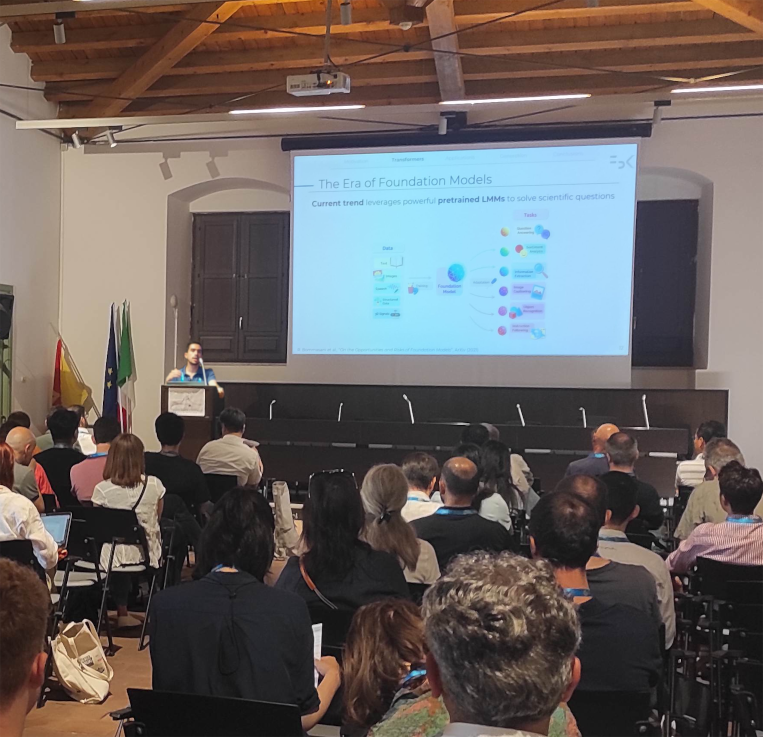Last week, researchers and experts from around the globe gathered at the EGU Galileo Conference “Fibre Optic Sensing in Geosciences” in Catania (Italy) to discuss the latest advancements and future directions in fibre optic sensing. Among the distinguished speakers, our research group had the honour of being represented by Dr. Lorenzo Vaquero, who delivered an insightful talk on the future perspectives of Artificial Intelligence (AI) in research, focusing on the transformative potential of Large Multimodal Models.
The presentation explored how these sophisticated models, which can process and analyze data from multiple modalities such as text, images, and acoustic data, have the potential to revolutionize geoscientific research. A portion of the talk was also dedicated to practical applications of AI in computer vision, highlighting how advanced techniques are employed at DVL to interpret and analyze complex images and videos.

The presentation sparked considerable discussion among participants, with attendees expressing great interest in the potential of these AI technologies to address pressing challenges in geosciences. By merging fibre optic sensing with AI and multimodal data analysis, the future of geoscientific research looks poised for remarkable advancements.
We are proud of Dr. Vaquero’s contribution to this prestigious conference and remain committed to pushing the frontiers of research through innovative applications of AI. The insights shared at the conference reflect our ongoing dedication to harnessing cutting-edge technology for scientific progress and its broader societal impact.
For more updates on our research and future events, stay tuned to our website!
